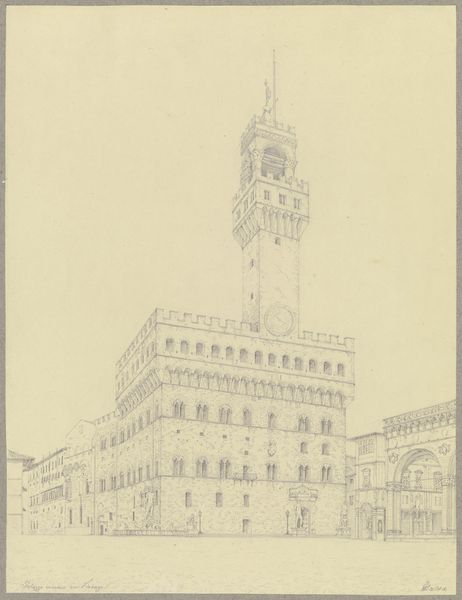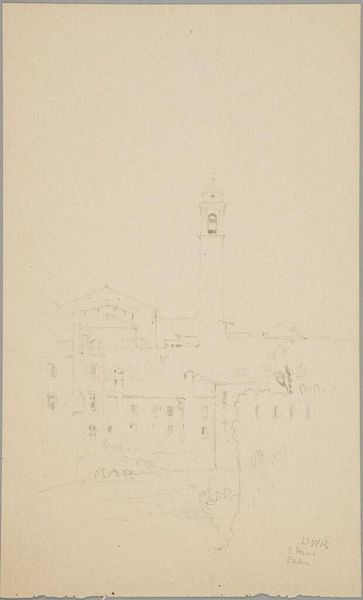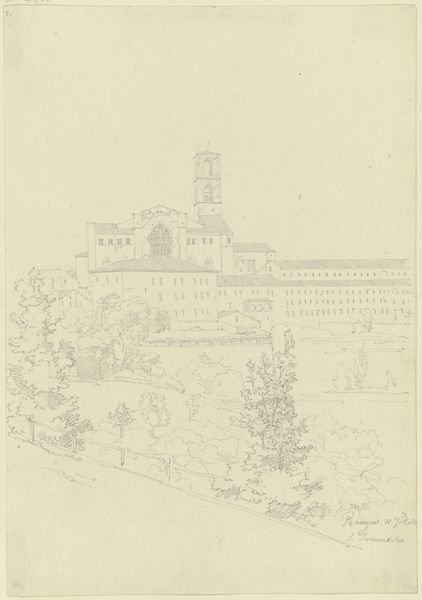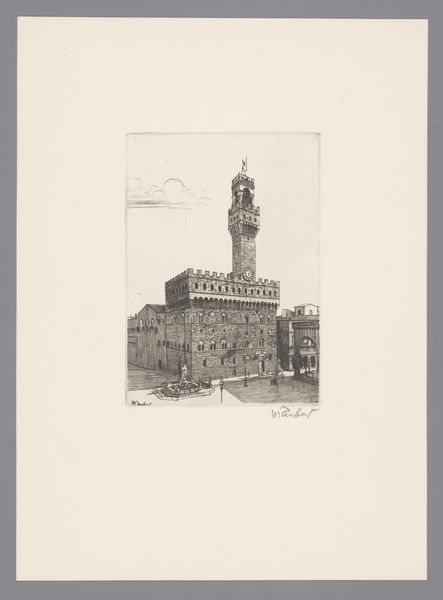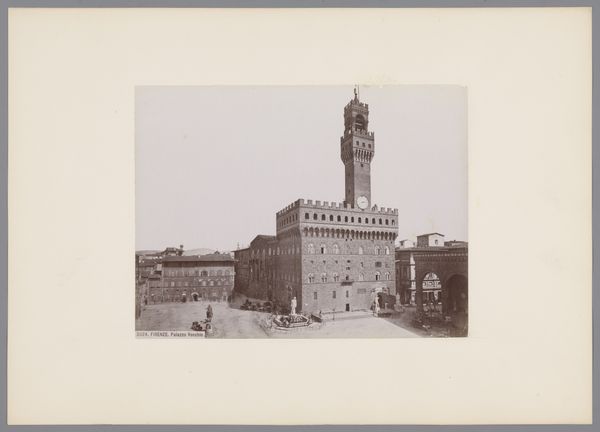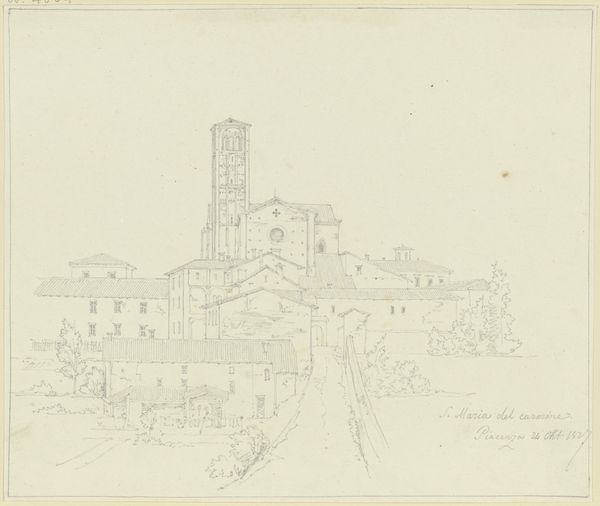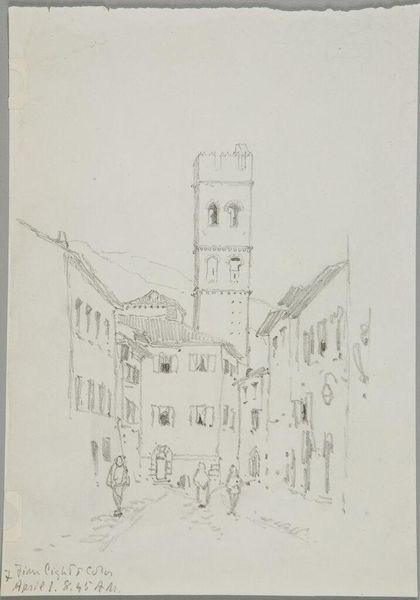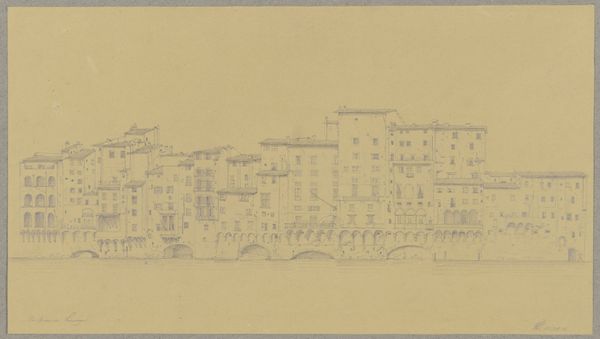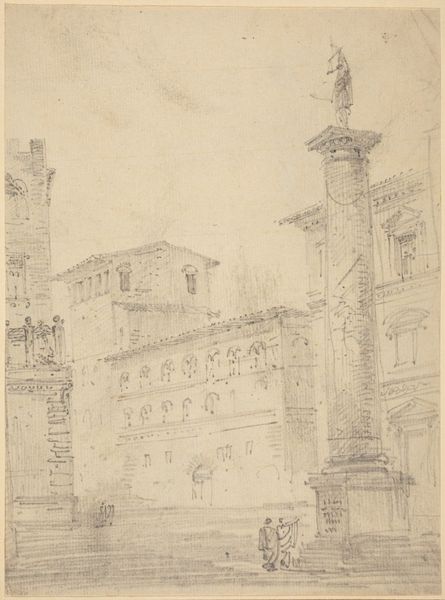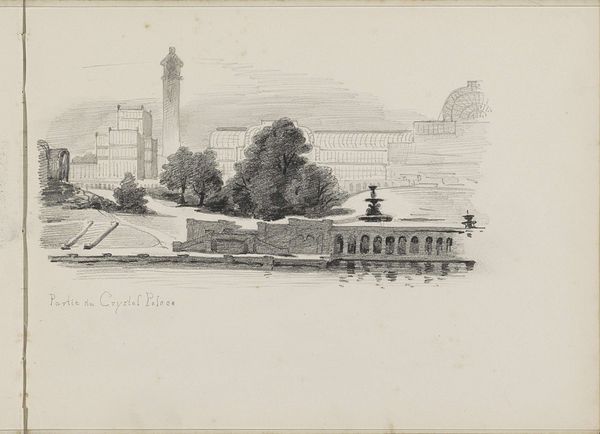
Copyright: Public Domain
Editor: Here we have Friedrich Wilhelm Ludwig’s pencil drawing, "Der Palazzo Pubblico in Siena," created around 1851 and currently held at the Städel Museum. The drawing's subdued, almost ghostly quality gives the building a sense of historical weight, as though the stones themselves hold centuries of stories. What strikes you when you look at this depiction of the Palazzo Pubblico? Curator: The immediate draw is its representation of civic power and its deliberate framing within a Romantic sensibility. The choice of subject, the Palazzo Pubblico, speaks to a 19th-century fascination with Italian city-states as models—or warnings—for contemporary European politics. It projects stability yet also perhaps loss. What’s interesting to consider is how Ludwig positions this iconic building. Is it simply a picturesque scene or is it subtly suggesting how institutional power interacts with the citizenry, even in its time? Editor: That’s a fascinating point. It’s a very clean image of a real place, but it could be interpreted as the romantic vision of something idealized but ultimately unattainable. Is that a tension many artists were exploring at the time? Curator: Absolutely. The 19th century was grappling with how to visualize national identity and authority, especially during political upheavals. Think about how museums themselves rose to prominence during this period, solidifying particular narratives about national heritage. Ludwig's rendering could be seen as an attempt to preserve or even monumentalize a specific version of the past within the face of rapid modernization and political change. Editor: So, this isn’t just a picture of a building; it’s about the values that building represented and how they were perceived at the time. Curator: Exactly. It highlights the enduring question of how art actively participates in the construction and understanding of history itself. Editor: That is quite powerful. It definitely provides a richer context than simply appreciating the architectural beauty. Curator: Indeed. History's always there in the bricks, if we learn to look.
Comments
No comments
Be the first to comment and join the conversation on the ultimate creative platform.
